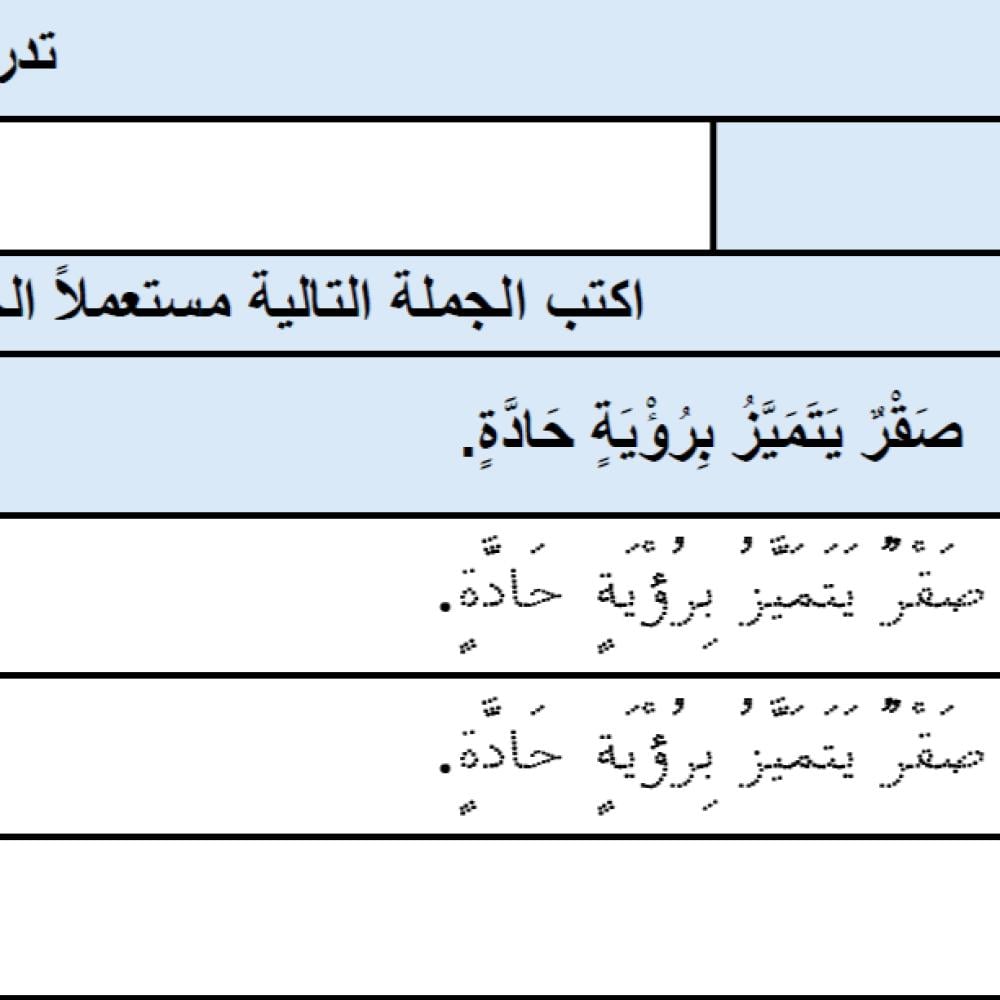- #تعليم الكتابة
- #الخط المنقط
- #تعليم الأطفال
- #تحسين الخط
- #مهارات الكتابة
- #تعلم الكتابة
- #تمارين الكتابة
- #التعليم المبكر
- #تنمية المهارات
- #أساليب التعليم
- #تطوير المهارات الحركية
- #تعلم الحروف والأرقام
- #كراسات الخط المنقط
- #تطبيقات تعليمية
- #تحسين التركيز والانتباه
Dotted Line: A perfect tool for teaching writing to children and beginners
Dotted Line: An Innovative Way to Teach Writing to Children and Beginners
The dotted line is an important educational tool that helps children and beginners learn to write in a smooth and enjoyable way. This technique relies on presenting letters and words in a dotted pattern, allowing learners to trace them with a pen, making it easier to control writing and improving hand-eye coordination. The dotted line not only improves handwriting but also contributes to increasing self-confidence and encouraging continued learning. In this article, we will explore the importance of the dotted line , its benefits , and the best ways to use it in education .
The importance of dotted lines in developing writing skills
Writing is one of the basic skills children need to learn from an early age, and dotted lines are an effective way to achieve this. They help:
- Developing fine motor skills
- Tracing dotted letters requires precise pen control, which enhances eye-hand coordination and strengthens finger muscles.
- Promoting independence in writing
- When a child masters tracing the dotted line, he or she becomes more able to write letters and words without help.
- Improve handwriting
- This method helps teach children how to form letters correctly, resulting in clearer, more organized handwriting.
- Increased focus and attention
- Tracing the dotted line requires continuous attention and concentration, which improves a child's visual perception skills.
Benefits of using dotted lines in education
1. Learn letters and numbers easily
- The dotted line can be used to teach Arabic and English letters as well as numbers, helping children distinguish between their shapes and repeat them until they master them.
2. A fun and child-friendly way
- Children are drawn to dotted writing because it seems like a fun activity similar to coloring, which enhances their desire to learn.
3. Providing an interactive teaching method
- Dotted line-based electronic applications and workbooks can be used, making learning more interactive and interesting.
4. Facilitating the transition from tradition to creativity
- After a period of practicing the dotted line, the child becomes able to write letters and words without assistance, allowing him to develop his own writing style.
The best ways to use the dotted line effectively
- Start with capital letters and then move to lowercase.
- It is best for a child to start by tracing capital letters as they are easier to control, then move on to lowercase letters as they gain more skill.
- Using dotted line notebooks
- Many custom workbooks are available that contain letter and number tracing exercises and can be printed for use at home or school.
- Benefit from educational applications
- There are interactive apps that offer digital dotted line exercises that help children practice using tablets.
- Repetition and daily practice
- Dedicating 10-15 minutes a day to practicing dotted writing can help your child continually improve their skills.
- Integrating play with learning
- Children can be encouraged to write through interactive games that rely on tracing dotted letters, such as drawing letters in sand or tracing them with their fingers.
Conclusion
Dotted writing is an excellent teaching tool that helps improve children's and beginners' writing skills in a fun and easy way. Regular use of this technique can boost self-confidence, improve handwriting, and enhance penmanship . Whether through notebooks or interactive apps, this tool can be used to facilitate the learning journey and make it more fun and creative.

